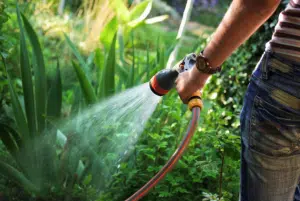Gardening in Australia: Making the Most of Your AWTS System
Gardening in Australia comes with its own set of challenges, especially during the long, hot summers and varying water restrictions across states. For those with an Advanced Wastewater Treatment System (AWTS), there are unique opportunities to leverage recycled wastewater for your garden. While it might be tempting to forgo your garden in favor of paving or synthetic turf, it’s essential to recognize the numerous benefits that gardens and lawns offer homeowners. Not only do they enhance the beauty of your property, but they also provide practical advantages that improve your living environment.
Why Gardens Matter
Cooling Your Home
One significant benefit of having a garden is its ability to lower temperatures around your home. Lawns and trees act like natural air conditioners, absorbing heat and providing shade. This can lead to lower energy costs by reducing the need for air conditioning during Australia’s sweltering summer months.
Supporting Wildlife
A garden creates a thriving ecosystem that supports beneficial wildlife, such as bees, butterflies, and other pollinators. These creatures play a vital role in maintaining biodiversity and can even help your plants thrive. Additionally, gardens provide a relaxing space for you and your family to enjoy nature, whether it’s for play or relaxation.
Using Your AWTS for Garden Irrigation
If you have an AWTS, you can take full advantage of the recycled wastewater it produces to nourish your ornamental gardens and lawns. However, there are important considerations to keep in mind.
Understanding Wastewater Output
The volume of wastewater your AWTS system produces depends on how many people are using the facilities in your home. Larger households generate more wastewater, which can support a more extensive garden with a wider variety of plants. Conversely, a smaller output may necessitate choosing drought-tolerant plants that thrive on minimal water.
Choosing the Right Irrigation Method
When using recycled water from your AWTS, it’s essential to select an appropriate irrigation method. Using subsoil irrigation or dripper hoses is an excellent option. These methods help reduce evaporation and deliver water directly to the root zone of your plants. This targeted approach is particularly beneficial, as many plants prefer watering at their roots, helping to prevent fungal issues that can arise from overhead watering.
Planting Considerations
Avoid Phosphorus-Sensitive Plants
The recycled water from your AWTS may contain higher levels of nutrients like phosphorus and salts. It’s crucial to avoid planting phosphorus-sensitive plants, as they may not thrive in these conditions. Examples of plants to steer clear of include:
- Banksia
- Grevillea
- Hakea
To minimize the levels of phosphorus and salts in your wastewater, consider using laundry and cleaning products recommended for septic systems. On the flip side, some native plants, such as westringia and certain acacia species, can tolerate lower levels of phosphorus and still thrive in your garden.
Recommended Plants for Your AWTS Garden
Here are some excellent plant choices that can flourish in gardens irrigated with AWTS wastewater:
Lavender: This hardy perennial is easy to grow and has been valued for centuries for its medicinal and aromatic properties. Lavender not only adds beauty to your garden but also attracts beneficial pollinators.
Scented Geraniums: Primarily grown for their fragrant leaves, these plants offer a delightful range of scents when you crush their leaves, from peppermint to rose to cinnamon. They make a lovely addition to any garden.
Blue Salvias: With their vibrant blue flowers, salvias are fantastic for attracting bees. Planting them near your vegetable patch can help ensure your fruits and vegetables get pollinated.
Rosemary: This tough Mediterranean herb is not only useful in the kitchen but can also be shaped into a dense hedge, making it a practical choice for garden borders.
Calendula: An easy-to-grow annual, calendula adds vibrant color to your garden and self-seeds, allowing you to enjoy its blooms year after year. Its petals and leaves can even be brewed into a tea and used as a natural pest repellent in vegetable gardens.
While gardening in Australia can be challenging due to heat and water restrictions, the benefits of maintaining a garden far outweigh the obstacles. With the help of your AWTS, you can recycle wastewater to nourish your garden, supporting both your home environment and local wildlife.
By understanding the capabilities of your AWTS and making informed choices about plants and irrigation methods, you can create a thriving garden that enhances your property and contributes to a healthier ecosystem. So, roll up your sleeves and get gardening—your home and the environment will thank you!
Related Posts
- Why should effluents be treated before discharge?
- Understanding Grey Water Recycling Systems
- Septic Tank Installation 101: What to Expect During the Process
- The Ultimate Guide to Maintaining Your AWTS System
- What Size Septic Tank Do I Need?
- Why Do We Need Domestic Treatment Plants?
- Why would you need a sewage treatment plant?
- A Guide to NSW Council Wastewater Solutions




